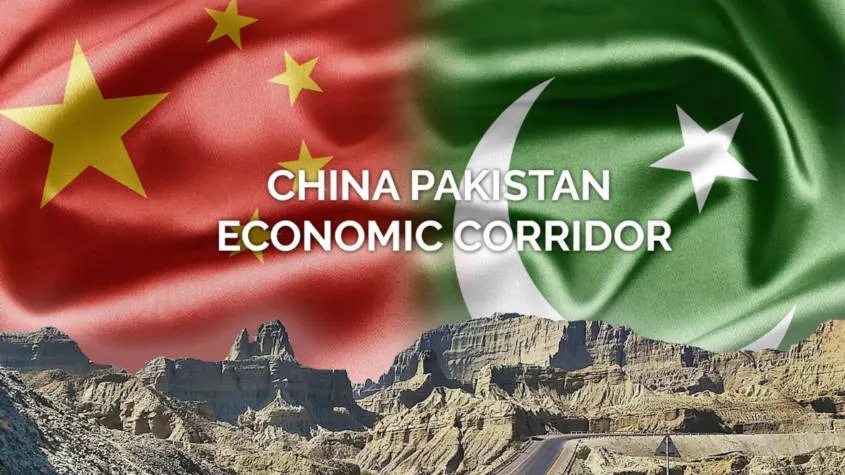India’s relations with most of its neighbors tell a tale of tensions and animosities. Today, the growing wave of Hindu nationalism is driving the region toward greater instability. The Indian national media and academia, which have a history of misrepresenting facts and constructing false narratives, are now playing a more central role in supporting the Hindutva-driven policies of the Indian government. The biased and misleading reports about the nature of Pakistan’s relations with China, which the latter refers to as its “Iron Brother,” clearly aim to undermine China-Pakistan friendship through deceptive propaganda. Over the past seven decades, relations between China and Pakistan have evolved based on mutual trust, respect, goodwill and shared goals for promoting broader regional interests. However, India’s self-assumed role as a regional hegemon continues to pose challenges to peace and economic development in the region.
In recent years, despite the complexities in global and regional affairs, Islamabad and Beijing have taken significant steps to advance their mutual interests. Since its inception, the China-Pakistan Economic Corridor (CPEC) has served as a cornerstone of Pakistan-China relations, solidifying their economic and strategic partnership. CPEC is not merely an infrastructure development project; it is a transformative initiative designed to enhance regional connectivity and stimulate economic growth across South Asia. The corridor, stretching from Gwadar to Kashgar, comprises a network of highways, railways and pipelines aimed at improving logistics and trade routes while advancing Pakistan’s industrial base. Critics, particularly from India, have labeled CPEC as a strategic tool for Chinese domination, but such claims overlook the tangible benefits that have emerged for Pakistan. The initiative has significantly contributed to the country’s energy sector by addressing chronic shortages, alongside fostering technology transfer and human capital development. Moreover, Pakistan’s pivotal role in CPEC positions it as a key player in regional trade dynamics, reinforcing the narrative that CPEC is mutually advantageous for both China and Pakistan, contrary to the misleading portrayals often seen in Indian media.
China, avoiding the temptation to engage in Pakistan’s internal politics, supports Pakistan’s stance on many regional and international issues while extending economic cooperation. Likewise, strategically located Pakistan serves as a key gateway to China’s interests in the region and beyond, providing access to vital trade routes, regional connectivity and global outreach. Since the launch of CPEC, there has been a noticeable increase in media campaigns portraying the mega project as a tool of China’s influence over Pakistan. For instance, some argue that the infrastructure development projects under CPEC primarily benefit China while burdening Pakistan with debt. However, the true picture of bilateral cooperation dispels the notion of a debt trap and tells a different story. CPEC has injected fresh momentum into cooperation between China and Pakistan. It has played a significant role in the socio-economic development of Pakistan, attracting substantial investment, creating 236,000 direct job opportunities and leading to the construction of highways, power plants, transmission lines and fiber optics. Additionally, collaboration in sectors such as technology, health and green development has opened new avenues for innovation and growth.
In a bid to overcome its economic challenges, Pakistan recently established the Special Investment Facilitation Council (SIFC), a dedicated body tasked with creating a conducive environment for investment in areas such as defence, agriculture, minerals, information technology, telecommunications and energy. SIFC aims to enhance the ease of doing business by reducing operational costs and establishing Special Economic Zones (SEZs) to facilitate commerce. Headed by the Prime Minister of Pakistan and comprising federal and provincial ministers and secretaries, SIFC is expected to attract further investment under CPEC, boost foreign reserves and generate employment. Numerous Chinese companies have already expressed interest in setting up SEZs, highlighting the potential for significant economic growth.
It is important to emphasize that civil nuclear cooperation between China and Pakistan is solely focused on promoting the peaceful use of nuclear technology and revitalizing Pakistan’s energy sector in line with International Atomic Energy Agency (IAEA) safeguards. At a time when Pakistan’s energy crisis is worsening, with severe impacts on the industrial sector and economic growth, China’s cooperation has been a milestone in enhancing energy security and advancing socio-economic development. The civil nuclear collaboration has helped Pakistan increase its nuclear energy capacity, providing low-cost electricity to the national grid, addressing energy supply issues and reducing reliance on energy imports, thereby conserving foreign exchange reserves, which are crucial for economic stability. Recognizing Pakistan’s strong record on nuclear safety and security, the IAEA continues to work closely with the country to promote the peaceful application of nuclear technology.
In summary, the narrative that China is suffocating Pakistan’s interests and autonomy is baseless. India’s policies have been the primary obstacle to peace and prosperity in the region. India remains the only country in South Asia that openly opposes CPEC, attempting to undermine it by spreading misinformation and sponsoring terrorism in Pakistan to disrupt development. In recent years, the Modi government’s Hindutva-driven policies have intensified regional disputes and rivalries. India’s actions in Kashmir, its aggressive military stance and its unjustified military buildup have further complicated the regional security environment. Additionally, its network of extraterritorial killings has become a global concern. India’s negative role in the region is a significant hurdle to peace and stability and has evolved into a broader global issue, raising questions about the international community’s response.










